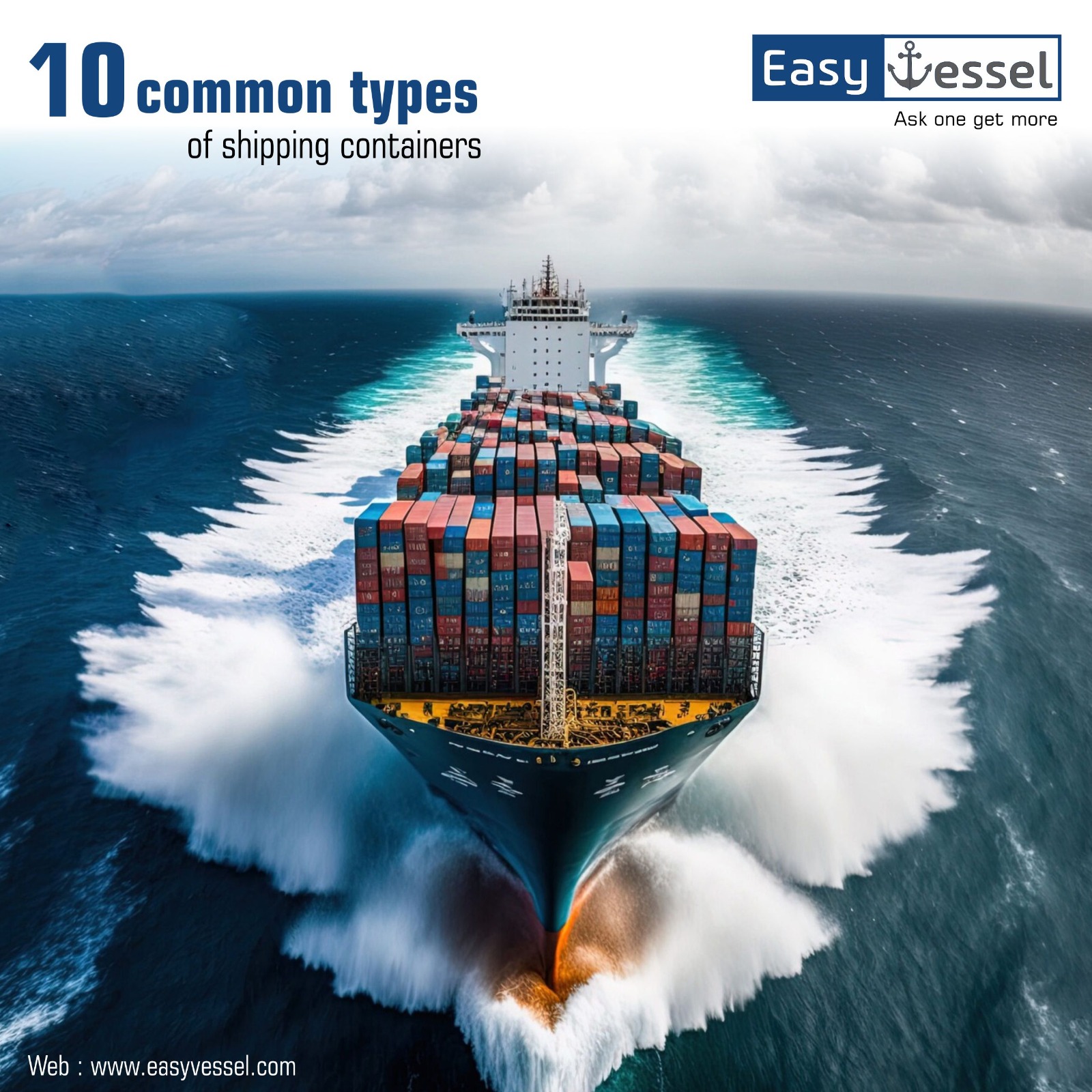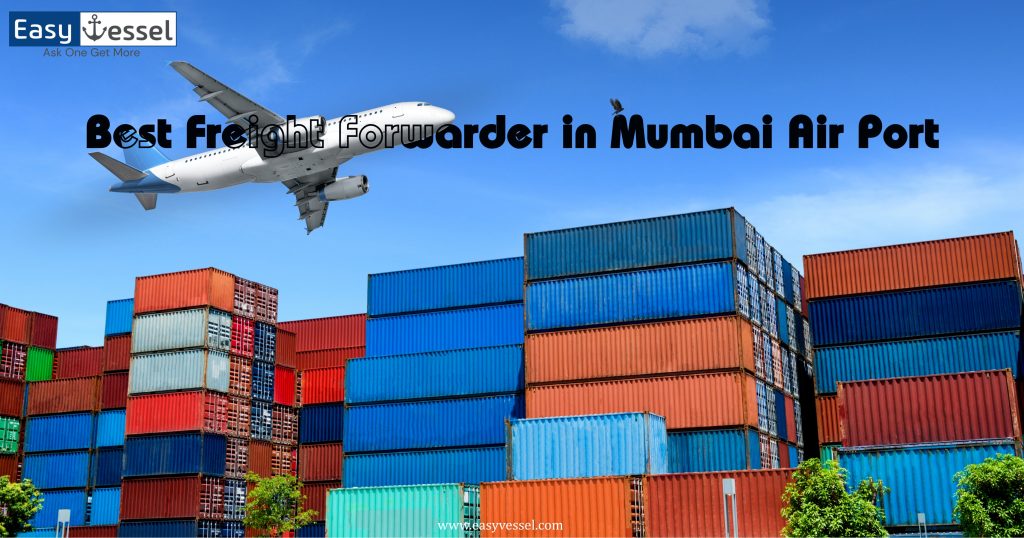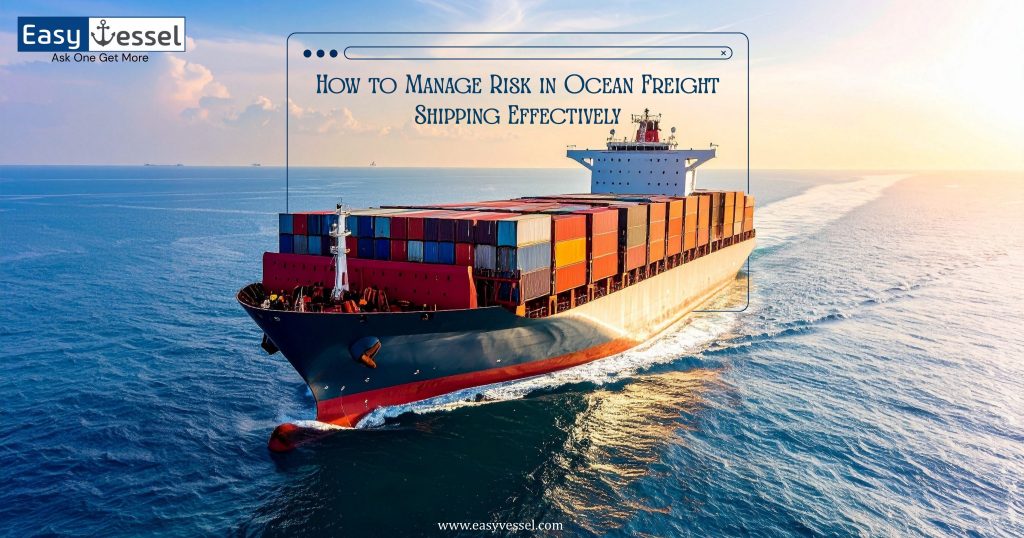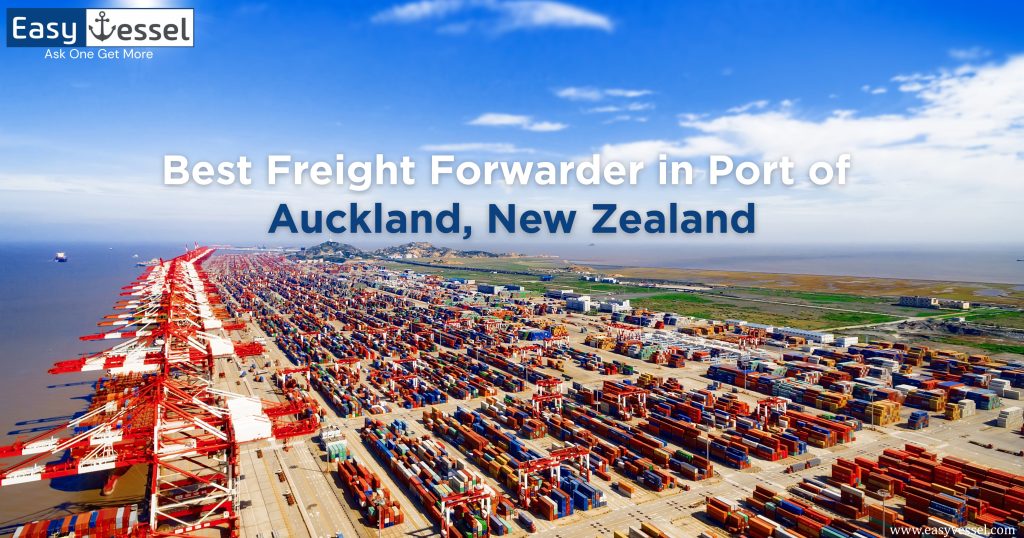- Shipping containers actively facilitate efficient transportation of goods worldwide, playing a crucial role in global trade.
- However, it is essential to acknowledge that containers possess distinct characteristics.
- Various container types specifically cater to unique cargo requirements, ensuring secure and safe transport.
- In this guide, we will explore different types of shipping containers, their distinctive features, and their applications.
- By understanding these options, importers, exporters, and logistics professionals can actively make informed decisions to optimize their shipping operations and streamline international trade.
Types of Shipping Containers:
Here are 10 common types of shipping containers with its details:
- Dry Containers
- Reefer Containers
- Flat Rack Containers
- Open Top Containers
- Tank Containers
- Platform Containers
- ISO Tank Containers
- High Cube Containers
- Open-Side Containers
- Ventilated Containers
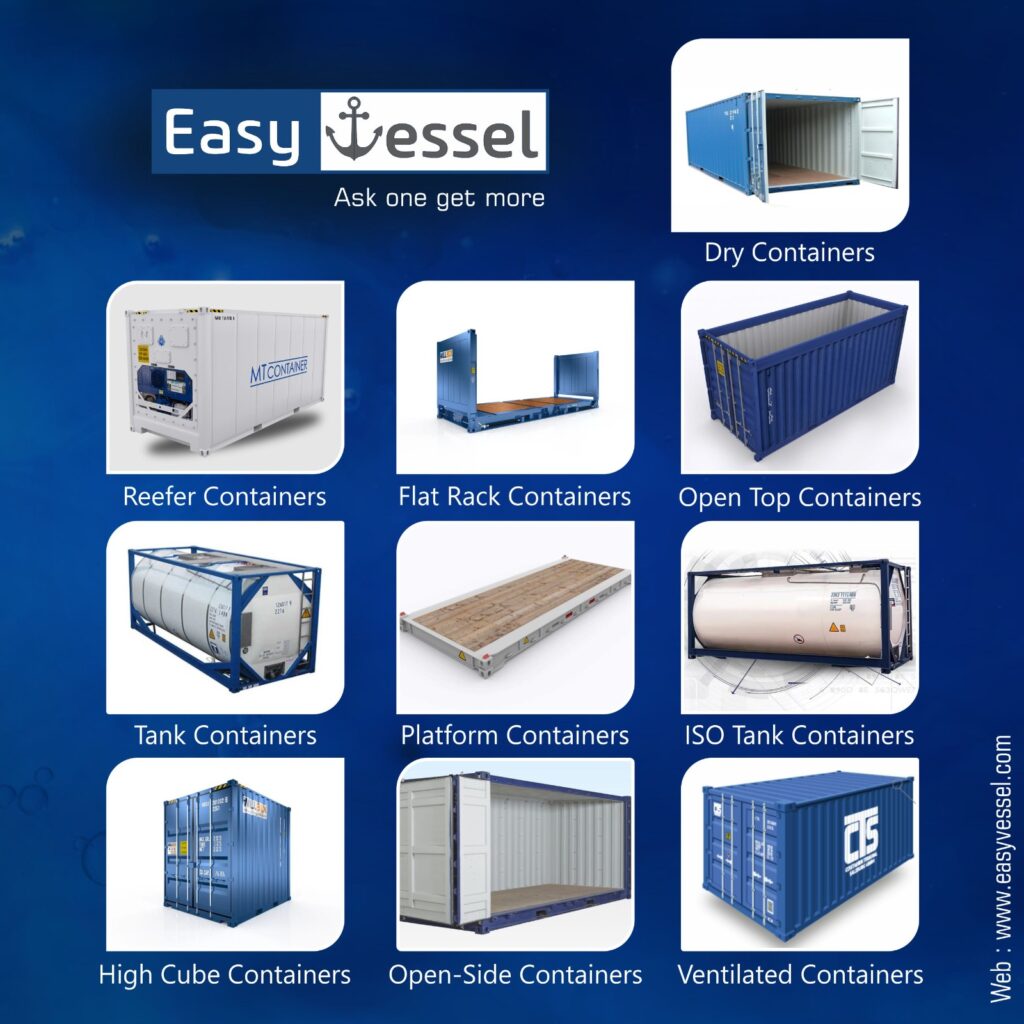
Dry Container:
- Dry container is the most common type of shipping containers is dry containers.
- People use them to transport general cargo such as packaged goods and equipment.
- These containers feature solid walls and a roof that protect the cargo from weather conditions during transit.
- Dry containers are suitable for goods that do not require temperature control or special handling.
Reefer Containers:
- Reefer containers, also known as refrigerated containers, are designed for transporting perishable goods that need temperature control.
- They have built-in cooling systems to maintain specific temperatures, ensuring the safe transportation of items like fruits, vegetables, pharmaceuticals, and certain chemicals.
- Reefer containers help preserve the freshness and quality of temperature-sensitive cargo during transit.
Flat Rack Containers:
- Flat rack containers provide an ideal solution for transporting oversized or heavy cargo.
- These containers feature collapsible sides and lack a roof, making them suitable for transporting machinery, vehicles, large pipes, and irregularly shaped items.
- Flat rack containers enable easy loading and unloading from the sides and are used when cargo exceeds the dimensions of standard containers.
Open Top Containers:
- Open top containers allow for full access from the top, as they have removable roofs for loading and unloading.
- People use them when cargo exceeds the height restrictions of standard containers or requires top-loading, such as machinery, large equipment, and bulk goods.
- Open top containers serve as a suitable option when cargo cannot be easily loaded through standard container doors.
Tank Containers:
- Tank containers are containers specifically designed for transporting liquids and gases in bulk.
- They feature cylindrical shapes and are constructed to ensure the safe transport of substances such as chemicals, fuels, food-grade liquids, and gases.
- Tank containers incorporate safety features to prevent leaks or spills during transit.
Platform Containers:
- Platform containers, which are also known as flatbed containers, consist of a flat platform without sides or a roof.
- People use them to transport oversized or heavy cargo that exceeds the dimensions of standard containers.
- Platform containers provide convenient access for loading and unloading from the sides or top, and they are frequently used for transporting machinery, construction equipment, and long pipes.
ISO Tank Containers:
- ISO tank containers, constructed according to ISO standards, specialize in transporting bulk liquids, gases, and powders.
- These containers are typically made of stainless steel and have a cylindrical shape, making them suitable for transporting chemicals, food-grade products, and hazardous materials extensively.
High Cube Containers:
- High cube containers are similar to standard containers but offer additional vertical space.
- They are suitable for cargo that requires extra height, such as tall machinery or voluminous goods.
- High cube containers provide more room for stacking cargo vertically while maintaining standard dimensions in length and width.
Open-Side Containers:
- Open-side containers allow for full side access, simplifying the loading and unloading of cargo.
- People frequently utilize them to transport goods like long pipes, lumber, or large panels that necessitate side access.
- Open-side containers provide flexibility for cargo that cannot be accommodated through standard container doors.
Ventilated Containers:
- Ventilated containers have small openings or vents that allow for controlled airflow.
- People use them for transporting goods like agricultural products, flowers, or moisture-sensitive items that require ventilation.
- Ventilated containers play a role in maintaining the quality and freshness of the cargo by facilitating proper air circulation.
Conclusion:
Containers are crucial for global shipping, and choosing the right type is important. Consider the factors discussed above to select the appropriate container for your goods, ensuring safe and efficient transportation.
EasyVessel connects you with reliable service providers for shipping needs. Sign up for access to trusted providers, simplifying the process and ensuring peace of mind. Save time and work with professionals through EasyVessel.
References:
FAQ’s
The dry container actively holds the position of being the most commonly used type of shipping container. It serves as a standard container for transporting general cargo that does not require temperature control. Dry containers actively withstand weather conditions and are available in various sizes, such as 20-foot and 40-foot lengths. Many importers, exporters, and freight forwarders actively select dry containers due to their wide availability and suitability for a variety of goods.
The six types of shipping containers are dry containers, reefer containers, flat rack containers, open top containers, tank containers, and open-side containers.
The most common sizes of shipping containers are 20 feet and 40 feet. There are also other sizes available, such as 45 feet and 48 feet.
A dry storage container is a fully enclosed container that transports a wide variety of goods. It doesn’t have passive voice. A refrigerated container is an insulated container with a refrigeration unit, making it suitable for transporting temperature-sensitive cargo.
Shipping containers are large metal boxes that transport goods by sea, land, or air. They have different sizes and securely hold and protect various cargo during transportation. These containers are portable storage units easily loaded onto ships, trucks, or trains. They play a vital role in global trade, efficiently transporting goods across long distances.
